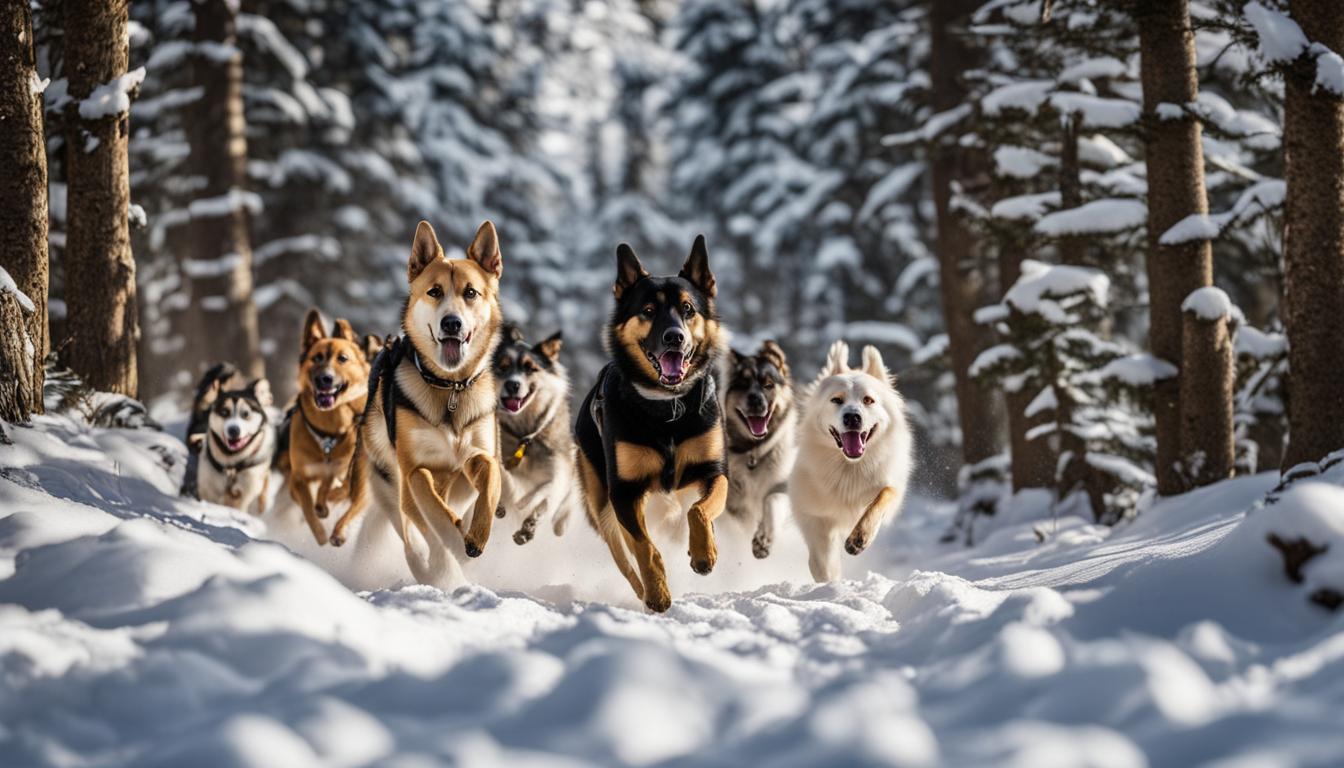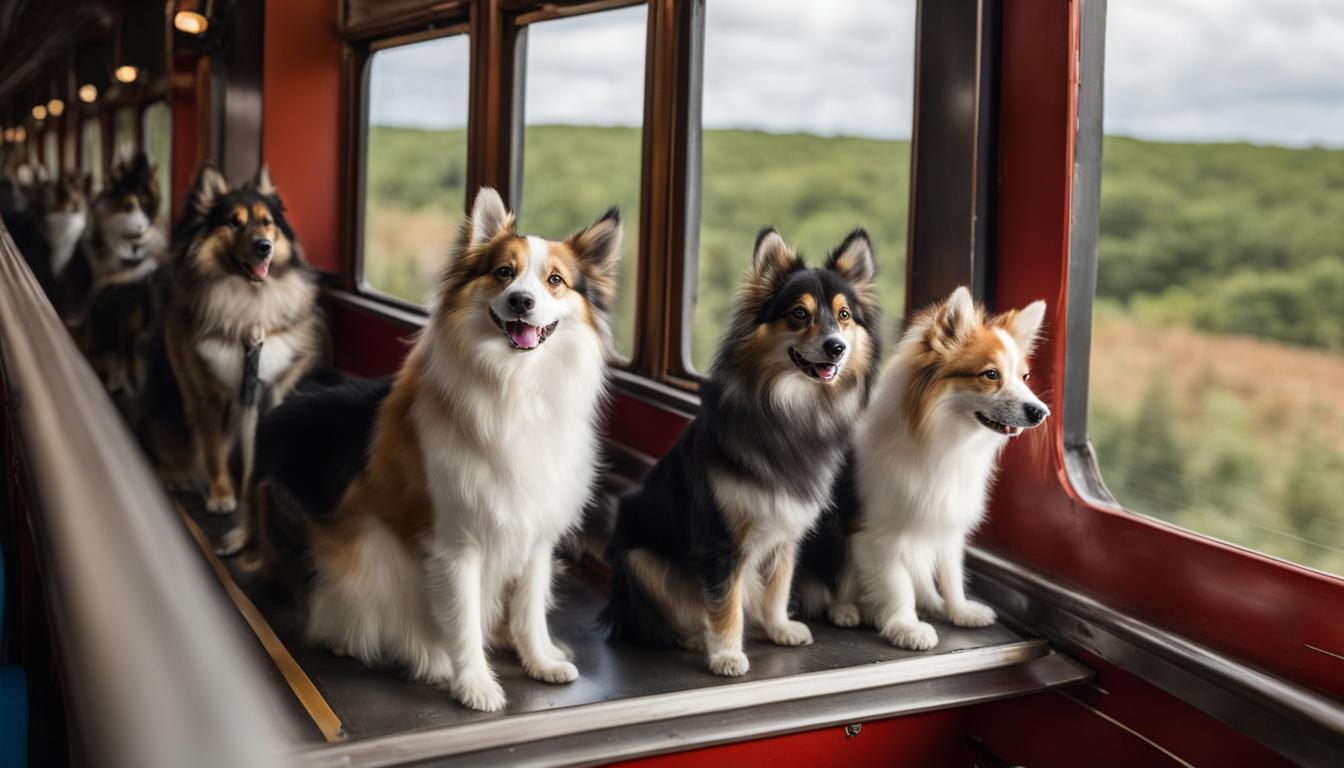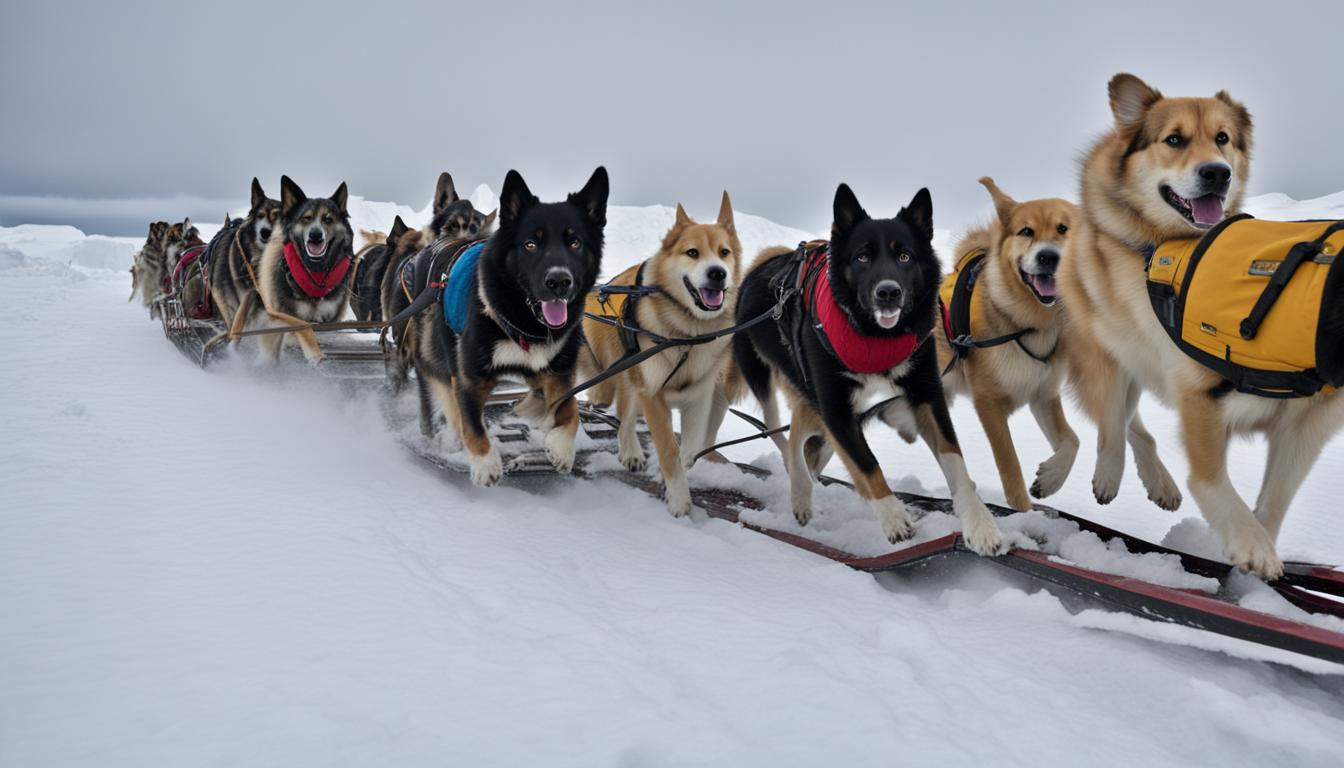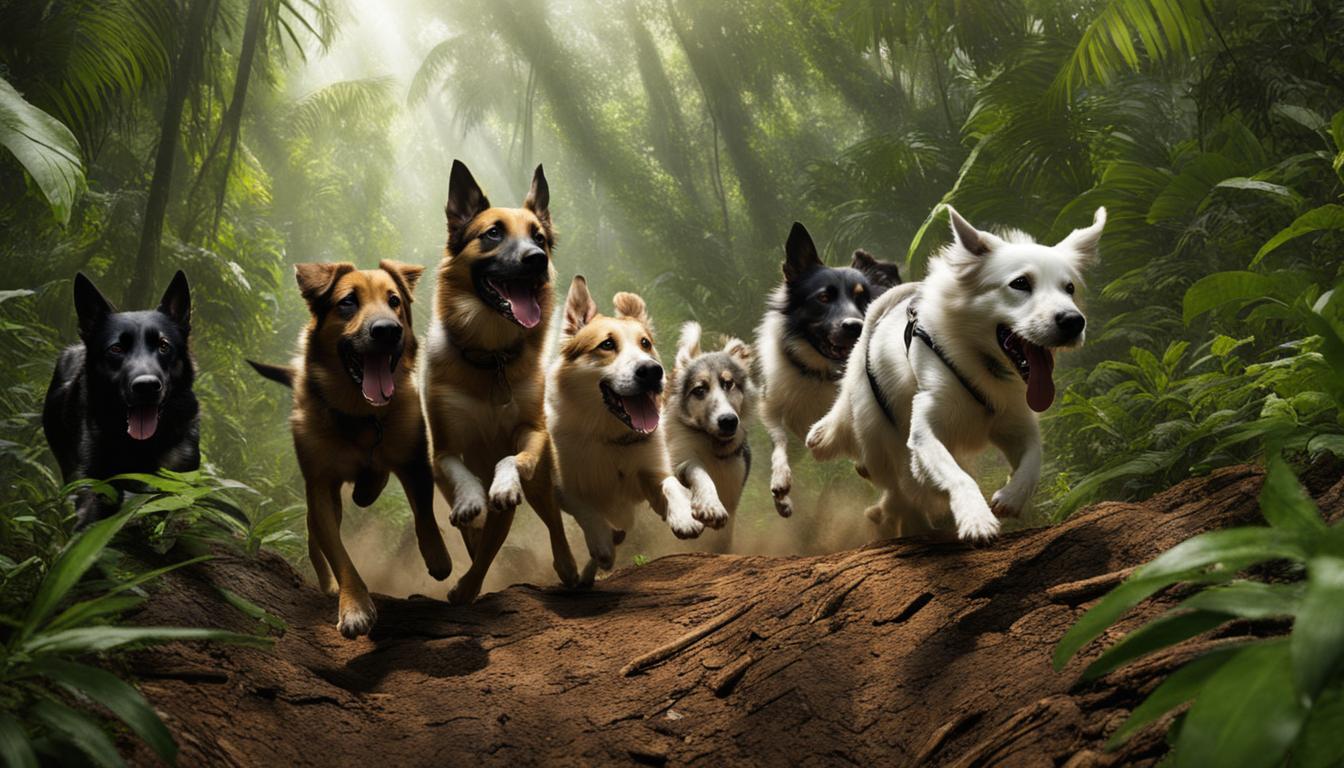Discover the fascinating world of gold rush dogs and their remarkable role during the late 1890s Gold Rush in Alaska and Yukon. In this article, we’ll delve into the captivating history of these dogs, the different breeds that were used, and the famous dogs that left an enduring impact on the gold rush era.
During the gold rush, dogs played a crucial role in supporting the prospectors and miners. They were not only companions in the harsh conditions but also carried heavy loads and helped with transportation. Their exceptional strength, endurance, and loyalty made them invaluable assets during this challenging era.
Key Takeaways:
- Gold rush dogs were essential for transportation, carrying heavy loads, and as companions.
- Sled dogs like Siberian Huskies and Alaskan Malamutes were prized for their strength in pulling heavy loads over long distances.
- Other breeds, such as Border Collies and Labrador Retrievers, were valued for their intelligence and versatility.
- Famous gold rush dogs like Buck and White Fang inspired renowned authors like Jack London.
- The bond between gold rush dogs and their handlers, known as mushers, was extraordinary.
Dog Breeds During the Gold Rush: Characteristics and Roles
During the gold rush period in America, various dog breeds were utilized for their unique characteristics and abilities. These dogs played crucial roles in supporting the prospectors and miners in their pursuit of gold. From pulling heavy loads to providing companionship, they were essential for survival in the harsh conditions of the gold rush.
One of the most valued breeds during this era was the Siberian Husky. Known for their strength and endurance, these dogs were ideal for pulling heavy sleds over long distances. Their thick coats protected them from the freezing winter conditions, allowing them to navigate the treacherous terrain with ease. Alongside the Siberian Huskies, Alaskan Malamutes were also highly prized for their physical prowess and ability to handle heavy loads. These sled dogs formed the backbone of transportation, ensuring that supplies and goods reached their destinations efficiently.
In addition to sled dogs, other breeds like the Border Collie and Labrador Retriever played important roles in the gold rush era. Their intelligence and versatility made them valuable assets for the miners. Border Collies were skilled herders, aiding in the management of livestock and ensuring their safety. Labrador Retrievers, known for their loyalty and hunting instincts, assisted in retrieving game and providing much-needed companionship to the miners. These dogs not only provided practical support but also served as sources of comfort and emotional companionship during the challenging times of the gold rush.
The Roles of Dog Breeds During the Gold Rush
To summarize, the dog breeds during the gold rush each had their unique characteristics and were assigned specific roles based on their abilities. The Siberian Husky and Alaskan Malamute, with their strength and endurance, were the primary sled dogs responsible for transporting supplies and goods in the harsh winter conditions. The Border Collie showcased their herding skills, while the Labrador Retriever contributed to hunting and provided companionship. These dogs played a vital role in the success and survival of the people during the gold rush, leaving an indelible mark on the history of this era.
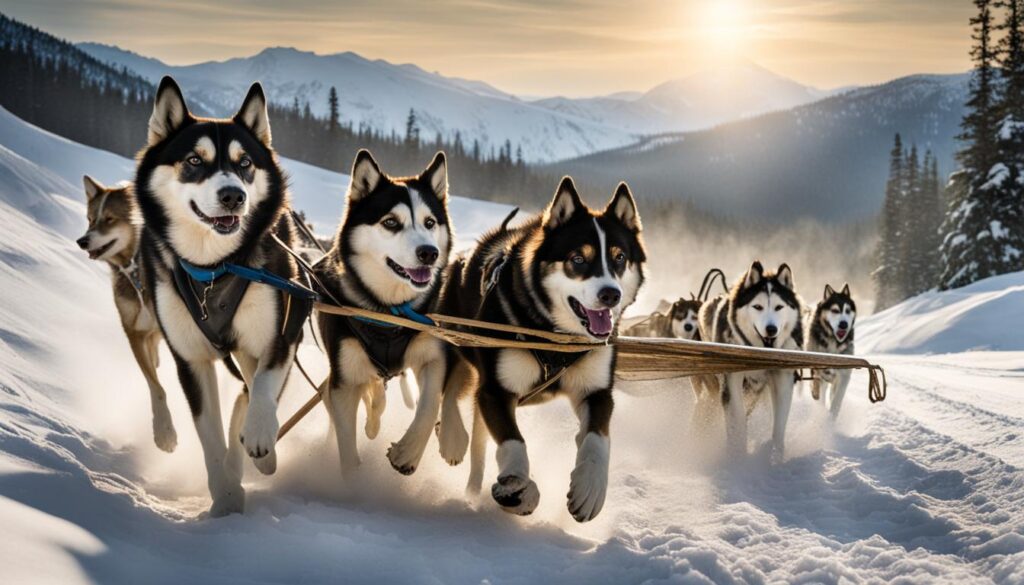
| Breed | Characteristics | Role |
|---|---|---|
| Siberian Husky | Strength, endurance, thick coat | Transportation, pulling heavy sleds |
| Alaskan Malamute | Physical prowess, ability to handle heavy loads | Transportation, pulling heavy sleds |
| Border Collie | Intelligence, herding skills | Herding livestock |
| Labrador Retriever | Loyalty, hunting instincts | Hunting, companionship |
Famous Gold Rush Dogs and Their Impact
The gold rush era gave rise to a number of legendary dogs who left a lasting impact on history. These dogs and their mushers became renowned figures for their incredible skills and accomplishments. One such figure was “Scotty” Allan, a Scottish adventurer and musher, who achieved legendary status in Alaska. Allan participated in the famous All Alaska Sweepstakes dog sled race and emerged victorious three times, showcasing the remarkable abilities of gold rush dogs.
Another prominent musher was Albert Fink, who played a significant role in the gold rush era. Fink established the Nome Kennel Club and organized dog sled races that captivated audiences and celebrated the prowess of these remarkable animals. The bond between mushers like Allan and Fink and their dogs was truly extraordinary, demonstrating the dedication and training required to succeed in the harsh conditions of the gold rush.
Training gold rush dogs was a rigorous process that demanded immense skill and dedication. These dogs had to be conditioned to endure long journeys, harsh weather, and challenging terrains. They were trained to respond to commands swiftly, navigate treacherous paths, and work effectively as part of a sled dog team. The training and skills of both the mushers and the dogs were essential for the survival and success of the gold rush era.
Table: Famous Gold Rush Dogs and Their Achievements
| Dog | Musher | Achievements |
|---|---|---|
| Buck | Jack London | Inspired the novel “The Call of the Wild” |
| Togo | Leonhard Seppala | Lead sled dog in the 1925 serum run to Nome |
| Balto | Gunnar Kaasen | Led the final leg of the serum run to Nome |
The legacy of the famous gold rush dogs and their mushers lives on, with their stories being passed down through generations. They represent the resilience, loyalty, and strength that characterized the partnership between humans and dogs during the gold rush era. These dogs played a pivotal role in shaping history and their impact should be celebrated and remembered for generations to come.
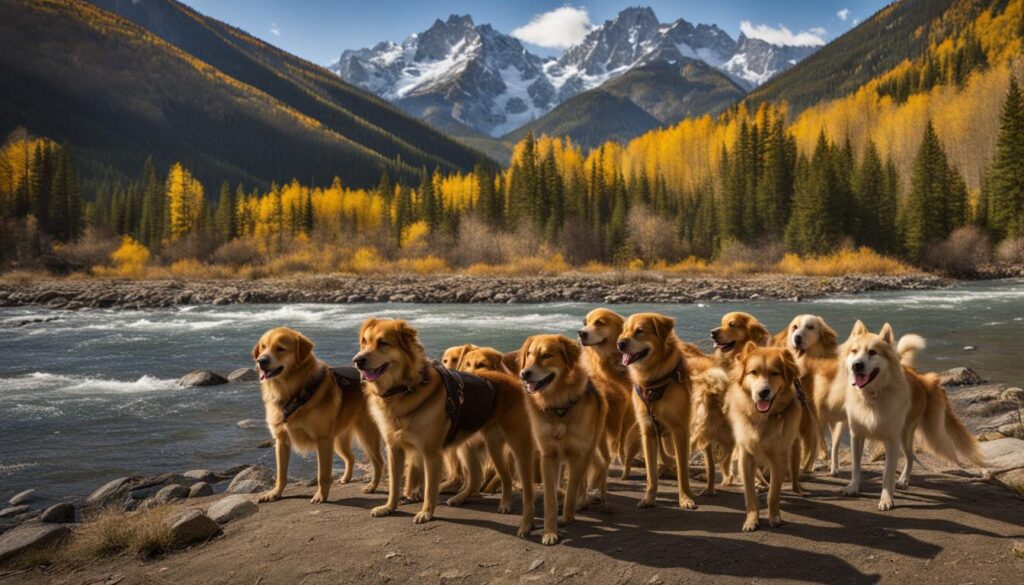
Conclusion
The Gold Rush era in America was a pivotal time when humans and dogs forged a remarkable bond. These dogs served as more than just workers; they were true companions during this tumultuous period. From the freezing winters of Alaska to the treacherous terrains of Yukon, gold rush dogs became indispensable in navigating the harsh conditions.
These canine companions played a vital role in the survival and success of prospectors and miners. They provided unwavering loyalty, strength, and endurance. Whether it was pulling heavy loads over long distances or providing much-needed companionship, these dogs were essential in the daily lives of those seeking fortune during the gold rush.
The gold rush dogs and their incredible stories have become legendary, passed down through generations. Their contributions should be celebrated and remembered. The bond between humans and dogs during this time is a testament to the enduring partnership between humans and their companion animals throughout history. The gold rush era in America would not be complete without these remarkable dogs by our side.
FAQ
What role did dogs play during the gold rush?
Dogs played a crucial role during the gold rush era in Alaska and Yukon. They were used for transportation, carrying loads, and as companions in the harsh conditions of the gold rush.
Which dog breeds were commonly used during the gold rush?
Sled dogs such as the Siberian Husky and Alaskan Malamute were highly valued for their strength and ability to pull heavy loads over long distances. Other breeds like the Border Collie and Labrador Retriever were prized for their intelligence and versatility.
Who were some famous gold rush dogs and mushers?
One notable figure was “Scotty” Allan, a Scottish adventurer and musher, who became a legend in Alaska. Albert Fink, who established the Nome Kennel Club and organized dog sled races, was another famous dog musher.
What impact did gold rush dogs have on history?
Gold rush dogs left an indelible impact on the history of the gold rush. Their contributions in transportation, companionship, and survival were vital to the success and survival of the people during this era.

